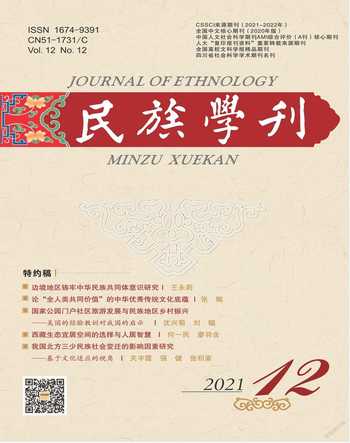Regional Cultural Networks and Rural Social Governance: Based on An Investigation in Xijiang Miao Village of Qiandongnan
Yang Daiyun
Abstract:Strengthening social governance in ethnic minority areas and rural areas can be of great significance to promoting national governance and rural revitalization. Rural social governance in ethnic minority areas is not only appears to be dominated by national politics, law, and administration but also influenced by local economic development levels, ethnic culture, customs and habits, traditional concepts, geographical environment, and other factors. It is likely that in local rural social governance some aspects of ethnic folk culture appear indispensable and objectively constitute the supplementary resources for governmental administration. As a world cultural heritage tentative area, the Miao village community-at the foot of Leigong Mountain in the Miaoling range-displays regional cultural characteristics. In recent years, agreeing with local ethnic cultural characteristics, Miao village has actively explored and introduced new grassroots social governance paths, which conceivably not only reflect the inherent requirements of rural governance in the new era but also highlight local ethnic characteristics. Among them, it is found that the case of “Thousand Households Miao Village” in Xijiang can be quite representative and worthy of attention.
Although arguably great changes have taken place in Chinas rural areas, their traditional way of social interpersonal communication, family-clans, and neighborhood relations managed by blood ties still seems to exist widely. Local gentry, made up of prestigious and seemingly able elders and sages, still appear to play an important role in rural social governance. These elites assume an indispensable part in coordinating conflicts and providing positive energy by setting themselves an example to others. Compared with the gentry who returned to their hometown, “Fanglao” are born and raised in their local village, and they do not have the experience of being an official elsewhere. The trust of the villagers in them mainly seems to come from their own quality of public service and personal moral character.
Xijiang Miao Village is the largest traditional village in this region and is also a famous rural tourist attraction. Through the authority and “presence” of “Fanglao”, the traditional culture of the Miao village-such as the village rules, ancient songs, festivals, ecological concepts, and fire prevention customs-appears to be effectively integrated and functioning properly, thus reshaping the social order of the village and effectively forming a governance mechanism. By examining this cultural network of social governance in Xijiang Miao Village, it can be seen that the rich and colorful regional culture-from the perspective of rural revitalization-has not only become a hotspot of sightseeing tourism but also an endogenous resource and internal incentive for the co-governance of government and people in rural social governance. This appears to reduce governance costs, promote governance innovation, and enhance governance effectiveness. The integration of such resources arguably is in line with the internal logic of exploring innovation while considering local conditions in current rural governance.
Key Words:Qiandongnan; “Fanglao” in Xijiang Miao Village; gentry; social governance
- 民族学刊的其它文章
- Research on the Construction of a Public Services Happiness Index for Residents in a Multi睧thnic Embedded Community
- Why is a Mountain Efficacious:Mount Jizu, Yunnan, as a Model of Civilization Symbiosis
- A Study of a Diversified Action Plan on the“Learning Standard Chinese for Pre-Primary School Education”
- 边境地区铸牢中华民族共同体意识研究
- A Study on the “Landscaping” of Ethnic Diet Cultural Resources in the Field of Tourism: A Case Study of the Hundred-Family Feast of the Dong in Chengyang Eight Villages
- 饮食文化叙事与铸牢中华民族共同体意识:广西米粉文化溯源

